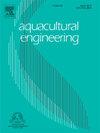A robotic fish processing line enhanced by machine learning
IF 4.3
2区 农林科学
Q2 AGRICULTURAL ENGINEERING
引用次数: 0
Abstract
This paper presents the design of a comprehensive automatic fish processing line utilizing machine learning algorithms. The processing line encompasses several essential steps, including fish identification by type, fish sorting by size, fish orientation based on shape, and fish cutting at the optimal chopping points. The primary objective of this design is not just automation but also maximizing economic benefits by preserving the maximum amount of fish meat during the cutting process, achieved through the application of machine learning algorithms. To accomplish these goals, we employ a combination of transfer learning and convolutional neural networks to establish criteria for actions across all stages of automatic fish processing. At the heart of the processing station is a conveyor belt equipped with numerous sensors and lenses. Positioned along this conveyor belt are two robotic arms, responsible for precise positioning and cutting operations, all guided by the machine learning algorithms. To provide a visual representation of these design concepts, we have created a 3D SolidWorks model.
通过机器学习增强的机器人鱼类加工生产线
本文介绍了利用机器学习算法设计的鱼类综合自动加工生产线。该加工线包含几个基本步骤,包括按类型识别鱼、按大小分拣鱼、根据形状确定鱼的方向,以及在最佳切割点切割鱼。该设计的主要目标不仅是实现自动化,而且还要通过应用机器学习算法,在切割过程中最大限度地保留鱼肉,从而实现经济效益最大化。为了实现这些目标,我们采用了迁移学习和卷积神经网络相结合的方法,为鱼类自动加工的各个阶段制定行动标准。加工站的核心是一条传送带,上面装有许多传感器和镜头。传送带上有两个机械臂,负责精确定位和切割操作,所有操作都由机器学习算法指导。为了直观地展示这些设计理念,我们创建了一个 3D SolidWorks 模型。
本文章由计算机程序翻译,如有差异,请以英文原文为准。
求助全文
约1分钟内获得全文
求助全文
来源期刊

Aquacultural Engineering
农林科学-农业工程
CiteScore
8.60
自引率
10.00%
发文量
63
审稿时长
>24 weeks
期刊介绍:
Aquacultural Engineering is concerned with the design and development of effective aquacultural systems for marine and freshwater facilities. The journal aims to apply the knowledge gained from basic research which potentially can be translated into commercial operations.
Problems of scale-up and application of research data involve many parameters, both physical and biological, making it difficult to anticipate the interaction between the unit processes and the cultured animals. Aquacultural Engineering aims to develop this bioengineering interface for aquaculture and welcomes contributions in the following areas:
– Engineering and design of aquaculture facilities
– Engineering-based research studies
– Construction experience and techniques
– In-service experience, commissioning, operation
– Materials selection and their uses
– Quantification of biological data and constraints
 求助内容:
求助内容: 应助结果提醒方式:
应助结果提醒方式:


